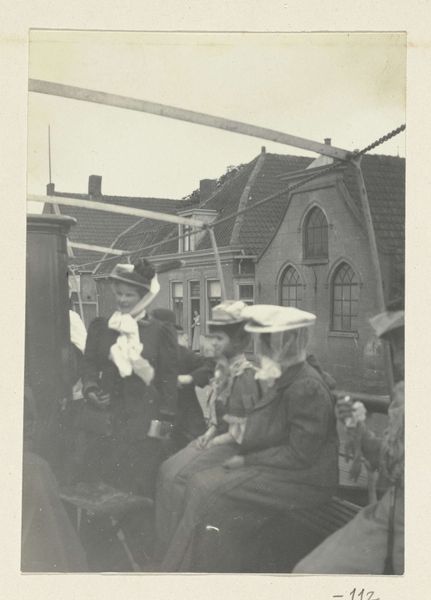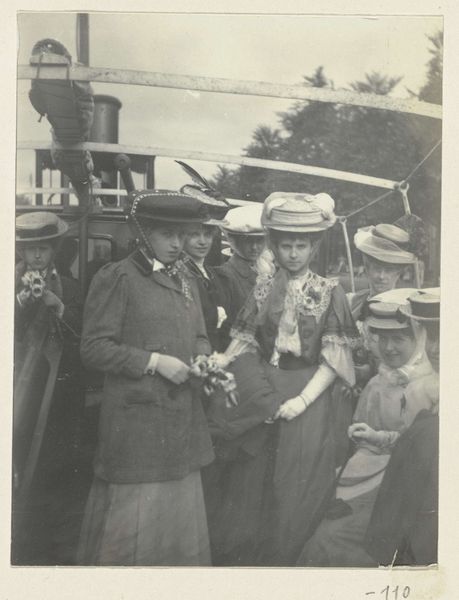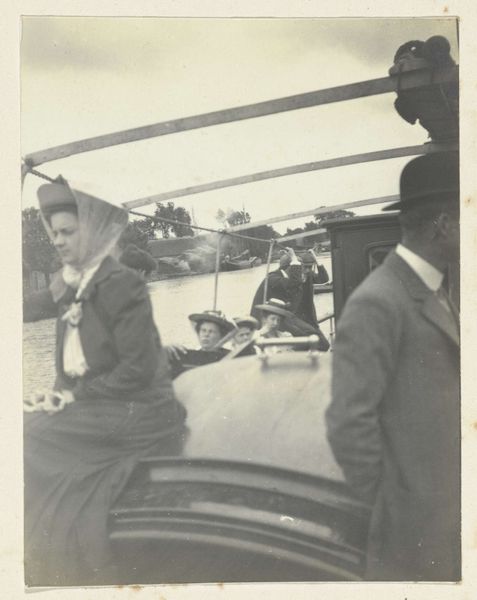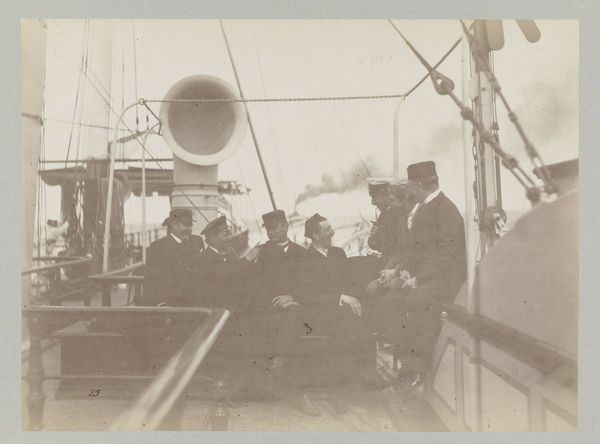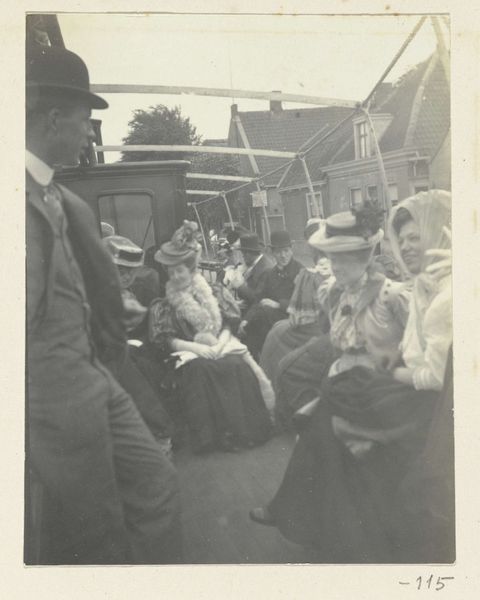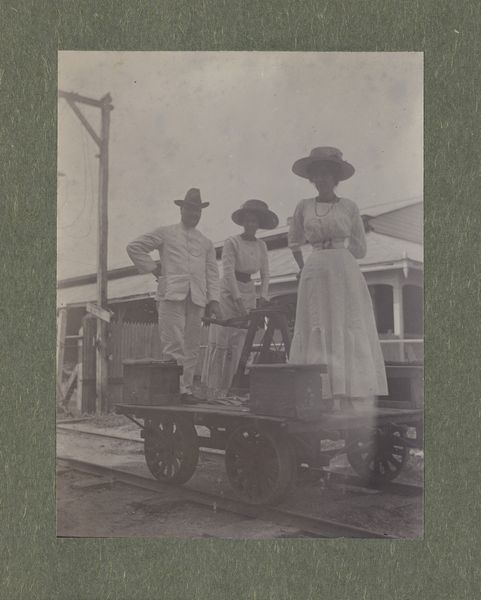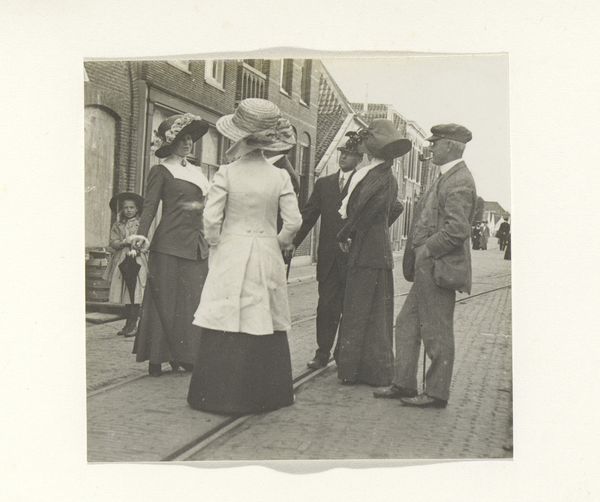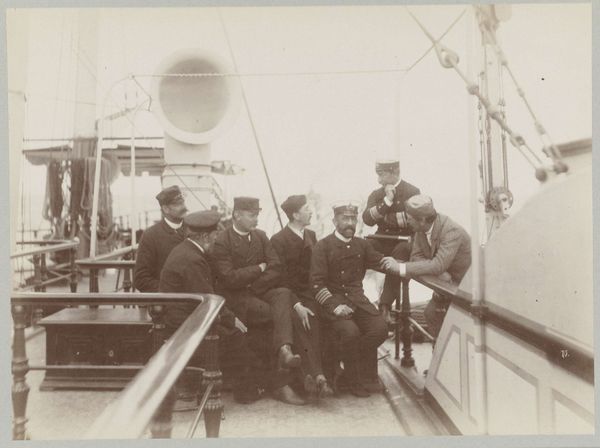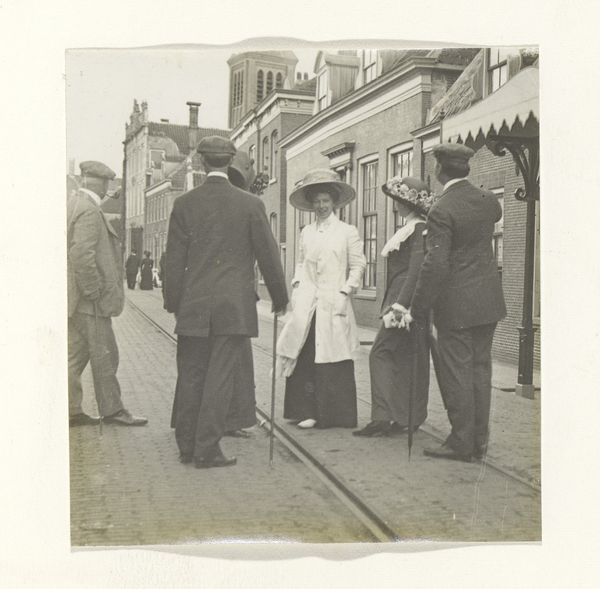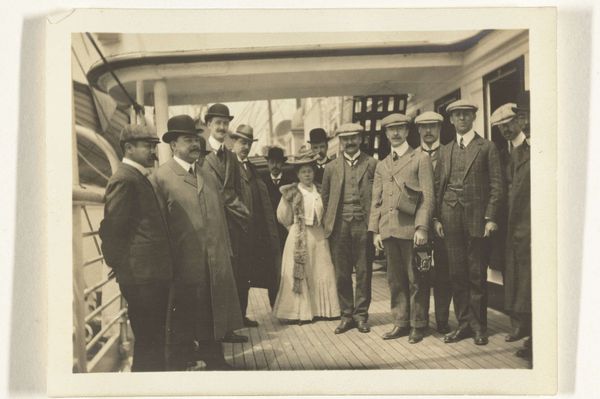
Aan boord van een boot bij een bruiloft of feest c. 1903 - 1908
0:00
0:00
geldolphadriaankessler
Rijksmuseum
Dimensions: height 80 mm, width 110 mm, height 363 mm, width 268 mm
Copyright: Rijks Museum: Open Domain
Editor: Here we have Geldolph Adriaan Kessler’s photograph, “Aan boord van een boot bij een bruiloft of feest,” which translates to “Aboard a Boat at a Wedding or Party,” taken around 1903-1908. It’s a gelatin silver print that strikes me as a very staged yet intimate group portrait. What can you tell me about it? Curator: It’s interesting to consider the societal function of this type of photograph. Beyond a personal memento, it’s a constructed image intended to portray a specific social standing. What do you notice about the subjects' attire and the setting? Editor: The clothes suggest wealth. Also, the presence of the boat suggests leisure, like they’re enjoying a social event exclusive to their circle. Curator: Exactly. Photography at this time was becoming more accessible, yet these carefully composed scenes reinforced class distinctions. Kessler, positioned within this societal context, used photography, typically considered democratic, as a tool to document and arguably, to celebrate the elite. How does that impact your interpretation? Editor: It makes me wonder about the photographer's own background. Was Kessler critiquing or complicit in perpetuating those social structures? Did this photograph reinforce the idea of marriage as a means of social mobility for the individuals in this photo? Curator: Those are critical questions to consider. And who would be looking at these images? The performance of the figures—the almost theatrical poses, the emphasis on respectable clothing — is staged for their contemporaries, a selective presentation of reality circulated within and consumed by their social group. Editor: It is almost like this photograph is part of a larger conversation, a tool to document social trends in that time. Curator: Precisely. And our conversation gives rise to new perspectives in light of today's discourse, wouldn't you agree? Editor: Yes, absolutely! It is helpful to reflect on its origins within a specific historical moment, which enhances how it is perceived in museums and public settings today.
Comments
No comments
Be the first to comment and join the conversation on the ultimate creative platform.
